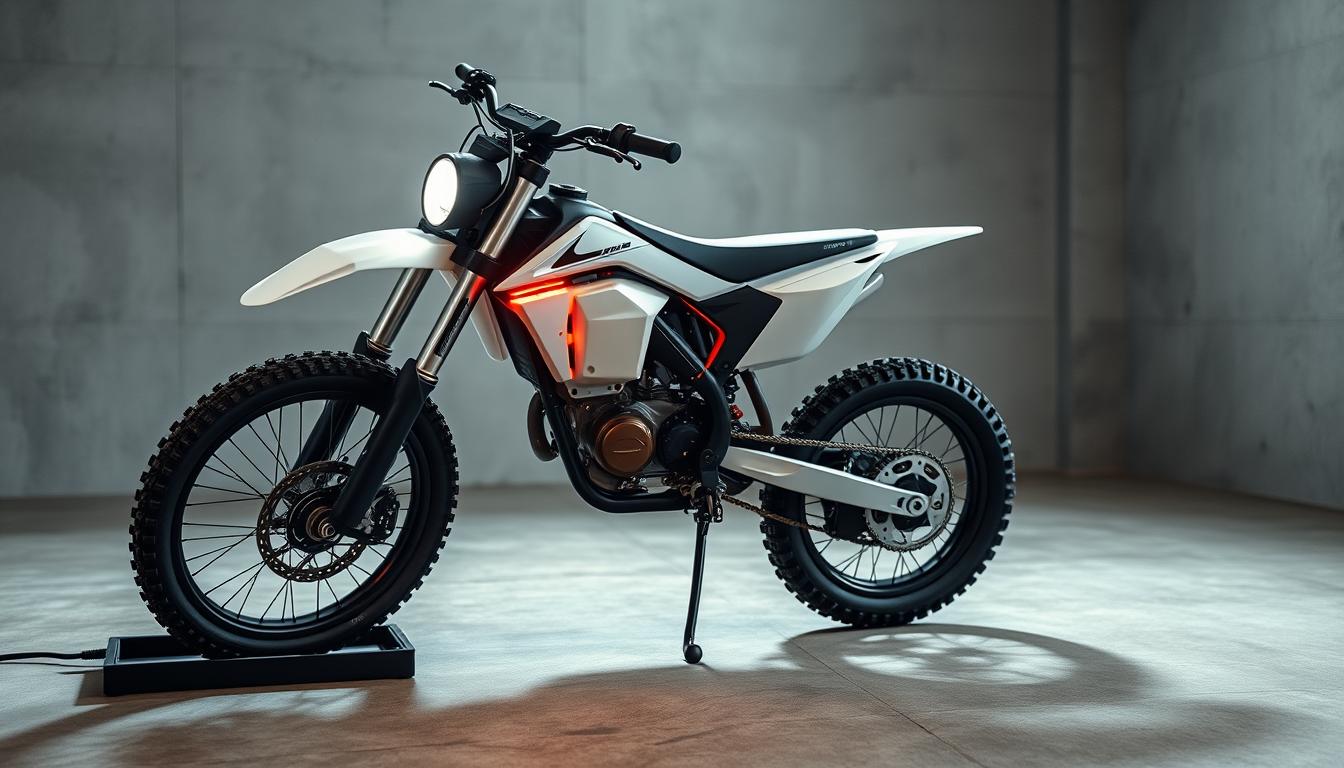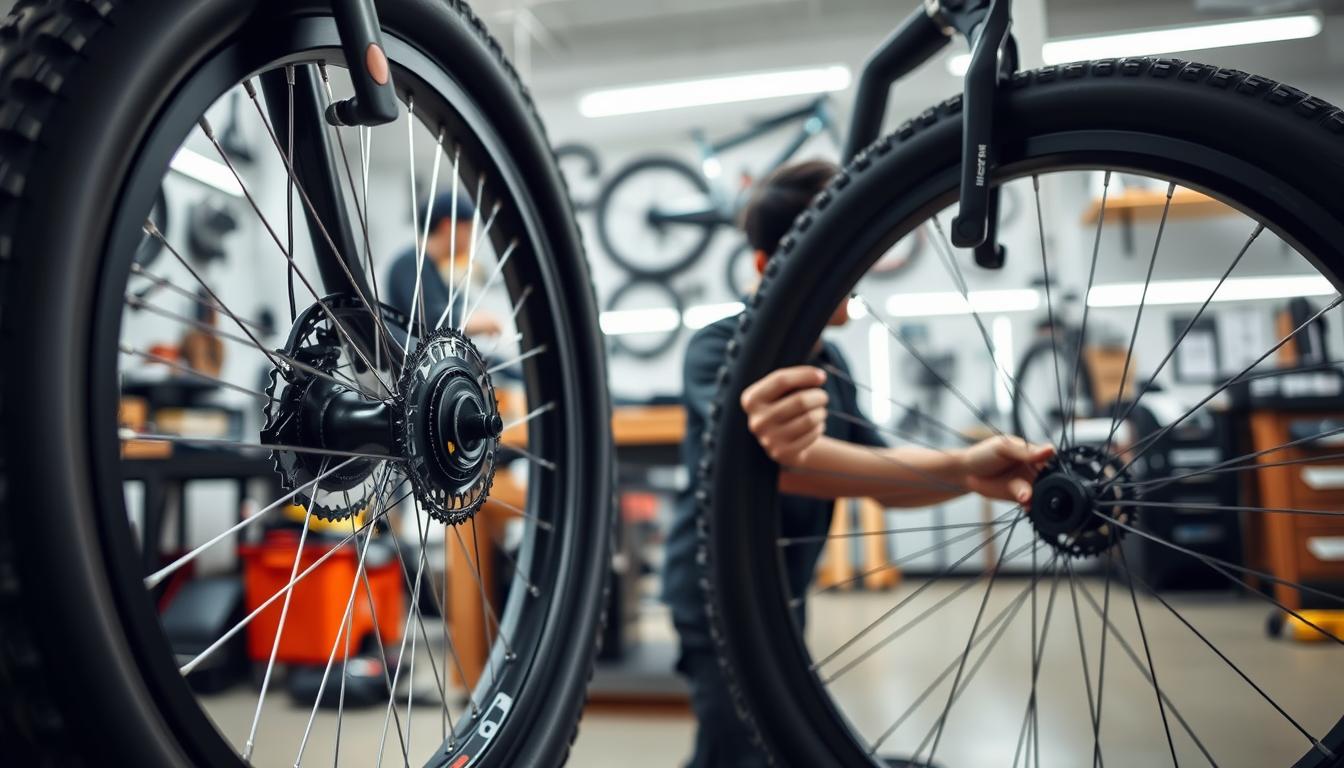Electric bikes have become a popular mode of transportation for commuting and leisure activities. As with any mechanical device, they can experience motor problems that affect performance and riding experience.
Understanding the basics of your ebike’s motor system is essential for any e-bike owner. This knowledge can save time, money, and frustration when issues arise. A comprehensive guide can walk you through common motor problems and provide step-by-step solutions.

This guide will help you identify whether the issue is with the motor itself or related systems. Even if you’re not technically inclined, you’ll gain the confidence to perform simple troubleshooting before seeking professional assistance.
Understanding Your EV Bike’s Motor System
Understanding the intricacies of your electric bike’s motor system is crucial for effective troubleshooting and maintenance. The motor system is the heart of your ebike, providing the power needed for propulsion.
Key Components of an Electric Bike Motor System
The motor system of an electric bike comprises several interconnected parts. These include the motor itself, which can be either a hub motor or a mid-drive motor, the controller, which acts as the “brain” of the system, the battery, which serves as the power source, the throttle, which allows for manual control of power, and pedal assist sensors, which provide automatic power assistance based on pedaling.
| Component | Function |
|---|---|
| Motor | Provides propulsion to the bike |
| Controller | Regulates power flow from the battery to the motor |
| Battery | Supplies power to the motor |
| Throttle | Allows manual control of power output |
| Pedal Assist Sensors | Provides automatic power assistance based on pedaling |
Common Signs of Motor Problems
Identifying issues with your ebike’s motor system early on can prevent more significant problems from developing. Common signs of motor problems include unusual noises, intermittent power, complete power loss, reduced range, and jerky acceleration or deceleration. Regular maintenance of your ebike’s motor system can help prevent many of these issues and extend the lifespan of your electric bike.
Essential Tools for EV Bike Motor Troubleshooting
To effectively troubleshoot your EV bike’s motor, you’ll need a set of essential tools. This preparation will make the process much more efficient and effective, allowing you to identify and potentially fix issues without unnecessary delays.
Basic Diagnostic Tools
Basic diagnostic tools are vital for identifying problems with your EV bike’s motor. These include a multimeter/voltmeter for checking electrical connections and battery voltage, a set of Allen wrenches and screwdrivers for accessing components, electrical tape, wire cutters/strippers, and a bike stand for stability during repairs. A digital multimeter is particularly valuable as it allows you to test voltage, resistance, and continuity in various parts of your ebike’s electrical system.
Safety Precautions Before You Begin
Safety should always be your top priority when working with electrical components. Always disconnect the battery before working on any electrical parts of your bike. Wear appropriate safety gear such as gloves to protect against electrical shocks and eye protection when working with small parts or tools. Create a clean, well-lit workspace where you can organize parts and tools, and consider taking photos before disassembling components to help with reassembly. Having the user manual or service guide for your specific electric bike model can provide valuable model-specific troubleshooting information.
How to Troubleshoot EV Bike Motors: Battery-Related Issues
When troubleshooting EV bike motors, battery-related issues are often at the root of the problem. The battery is a crucial component that powers the motor, and any issues with it can lead to motor malfunctions. To diagnose battery-related problems, start by checking if your electric bike’s display panel turns on. If it doesn’t, it could indicate a battery issue.
Checking Battery Voltage and Capacity
To assess your battery’s condition, measure its voltage using a multimeter. For a 36V ebike battery, the normal voltage range is between 31V and 42V. If the reading is below 29V, it signifies a battery problem. Similarly, for a 48V battery, the voltage should be between 39V and 54.6V; readings below 39V indicate an issue. Using a multimeter is a straightforward way to determine if your battery is functioning correctly.
- Check the battery voltage at the terminals to ensure it’s within the recommended range.
- If the display panel doesn’t turn on, it often points to a battery problem rather than a motor issue.
- Common battery connection problems include loose terminals, corroded connections, and damaged wiring.
Resolving Common Battery Connection Problems
Battery connection issues can prevent proper power flow to the motor. Ensure that the battery is properly seated in its mount and that all connections are clean, tight, and free from corrosion. Regular maintenance can prevent many of these issues. If your battery isn’t holding a charge, it may need recalibration or could be nearing the end of its lifespan, typically 3-5 years.

Diagnosing Controller and Wiring Problems
When troubleshooting your electric bike’s motor, it’s crucial to examine the controller and wiring for potential issues. The controller acts as the brain of your e-bike, managing power flow between the battery and motor, while the wiring system connects these components, enabling them to function together seamlessly.
Identifying Controller Malfunctions
The controller is responsible for interpreting signals from throttle and pedal assist sensors. Common malfunctions include overheating, water damage, blown fuses, or internal component failures, which can prevent the motor from receiving proper power or signals.
- Look for visual signs of damage, such as burnt components or water intrusion.
- Check for unusual sounds or odors emanating from the controller.
Inspecting and Fixing Wiring Issues
Wiring problems can cause intermittent or complete motor failures. Inspect all cables for fraying, pinching, or damage to the insulation that could cause short circuits.

- Pay special attention to connection points where wires enter the controller, battery, and motor.
- Use a multimeter to test for continuity along suspicious wires to identify breaks or high-resistance points.
- When repairing wiring issues, use appropriate gauge wire and proper connectors designed for electric bike applications.
Troubleshooting Motor and Sensor Failures
Diagnosing motor and sensor failures is crucial for getting your ebike back up and running smoothly. Motor failures can occur in the motor circuit or the motor itself, and understanding the root cause is essential for effective troubleshooting.
Motor Circuit and Internal Failure Detection
Motor failures in electric bikes can be categorized into two main types: circuit failures and internal motor failures. Circuit failures often result from broken wires, short circuits, or loose connections between the controller and motor. To diagnose these issues, inspect the motor circuit for any signs of damage and check for loose or damaged wire connections.
- Check for broken wires or short circuits in the motor circuit.
- Inspect connections between the controller and motor for looseness or damage.
- Measure the resistance between motor phase wires to identify internal shorts or open circuits.
Sensor Malfunction Diagnosis and Solutions
A sensor malfunction might be responsible for the motor not working if your electric bike’s display panel turns on without issues. Brushless motors rely on Hall effect sensors to determine rotor position, and when these sensors fail, the motor may not start or run erratically.
- Disconnect the sensor connector to test for sensor malfunctions.
- Check pedal assist sensors by inspecting magnet alignment and sensor connections.
- Consider a controller reset or updating the motor’s firmware if supported.
By systematically diagnosing and addressing motor and sensor failures, you can effectively troubleshoot and repair your ebike, ensuring it operates smoothly and efficiently.
Resolving Throttle and Pedal Assist System Problems
The throttle and pedal assist system are vital components of your ebike, and resolving problems with these systems can significantly enhance your riding experience. These systems serve as the primary interface between the rider and the motor, allowing for control over the power and support provided during rides.
Throttle Troubleshooting Steps
Throttle issues can manifest as inconsistent power delivery or a complete failure to engage the motor. To troubleshoot, first check the physical condition of the throttle – it should return to its resting position immediately when released and shouldn’t feel loose or wobbly. Testing the throttle’s electrical function with a multimeter while rotating it can also help identify any problems; you should see a smooth increase in voltage as you turn the throttle.
If the throttle is stuck or not functioning correctly, it may be due to overuse. Checking the throttle’s position by the bike’s handlebars is essential. A malfunctioning throttle will generally get stuck in the rearmost position instead of popping back into place.
Fixing Pedal Assist Sensor Issues
The pedal assist sensor plays a crucial role in providing support while pedaling. For cadence-based pedal assist systems, ensure that the magnet ring on the bike’s front sprocket is properly aligned with the sensor and that all magnets are present and securely attached. Torque sensors, which measure how hard you’re pedaling to provide proportional assist, may require calibration if they’re providing too much or too little support relative to your pedaling effort.
If your ebike has multiple levels of pedal assist but some levels aren’t working correctly, the issue might be with the controller’s programming rather than the sensor itself. Clean connections and proper alignment are crucial for both throttle and pedal assist systems – dirt, water, or physical impacts can disrupt these sensitive components.
Conclusion: Maintaining Your EV Bike Motor for Longevity
Proper care and maintenance of your EV bike’s motor can significantly extend its lifespan. Regular checks and maintenance are vital to prevent most electric bike problems before they start, saving you time, money, and frustration in the long run.
To keep your ebike in top condition, establish a regular maintenance schedule that includes checking bike battery connections, inspecting bike wiring, cleaning electrical contacts, and testing motor performance. Protect your ebike from harsh environmental factors and avoid exposing it to extreme temperatures, moisture, or direct sunlight.
Additionally, keep your motor clean and free from debris, and regularly check and tighten all electrical connections. Pay attention to unusual sounds or performance changes, and address them promptly. Consider having your electric bike professionally serviced at least once a year or every 500-1,000 miles to ensure all parts are functioning optimally. By following these guidelines and practicing regular service, you can enjoy a reliable and efficient bike for years to come, finding effective solutions to potential issues.

